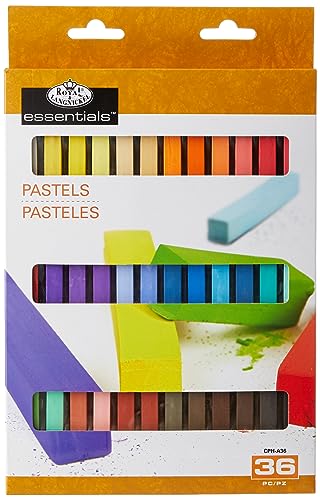The Importance of Proper Storage and Transportation for Soft Pastels
Soft pastels are a delicate art medium that requires special care when it comes to storage and transportation. These vibrant sticks of color, made up of pigment, binder, and a small amount of chalk, can easily smudge, break, or become contaminated if not handled properly. Whether you are an amateur artist or a professional painter, it is essential to know the best practices for storing and transporting your soft pastels to ensure their longevity and maintain their quality.
Invest in a Dedicated Pastel Storage Box
The first step in proper pastel storage is investing in a dedicated pastel storage box. These boxes are specifically designed to keep your pastels organized and protected. Look for a box that has individual compartments or foam inserts that will hold each pastel securely in place. Avoid using a regular toolbox or plastic container, as they can cause your pastels to rub against each other and break. A proper pastel storage box will help prevent damage and make it much easier to transport your pastels without the risk of any mishaps.
Consider Using Pastel Trays or Foam Inserts
In addition to a dedicated pastel storage box, it is a good idea to use pastel trays or foam inserts within the box to further protect your soft pastels. These trays or foam inserts can be placed inside the individual compartments of the box and will provide an extra layer of cushioning for your pastels. They will help to absorb any shocks or impacts that may occur during transportation. Make sure the trays or foam inserts are the right size for your box and are specifically designed for soft pastels to ensure a secure fit and maximum protection.
Label and Organize Your Pastels
To make it easier to find the colors you need and to further protect your pastels, it is essential to label and organize them properly. Consider using color-coded labels or a color chart to help you easily identify each pastel. This will save you time and frustration when you are working on your artwork. Additionally, keep your pastels organized by grouping them according to color families or any other system that makes sense for you. By keeping your pastels neat and organized, you can minimize the risk of accidental damage or contamination.
Take Precautions When Transporting Your Pastels
When it comes to transporting your soft pastels, taking extra precautions is essential. Start by ensuring your pastel storage box is securely closed and will not open during transit. If necessary, use rubber bands or straps to keep the box tightly shut. It is also a good idea to place the storage box in a larger, padded bag or case for further protection. This will help absorb any shocks or vibrations that may occur while you are carrying or transporting the box. If you are traveling by car, place the storage box in a stable position, such as a level surface or a secure compartment, to prevent it from sliding around and potentially causing damage to your pastels.
Store Your Pastels in a Cool and Dry Environment
In addition to proper storage and transportation, it is important to keep your soft pastels in a cool and dry environment to prevent them from becoming damaged. Excessive heat or humidity can cause the pastels to soften or melt, making them difficult to work with. Avoid storing your pastels near radiators, direct sunlight, or any other sources of heat. Instead, choose a cool and dry location, such as a dedicated art storage cabinet or a room with controlled temperature and humidity. By storing your pastels in the right conditions, you can ensure their longevity and maintain their quality for years to come.






